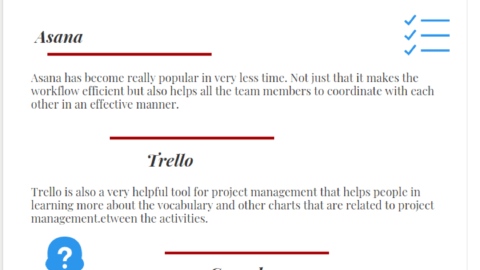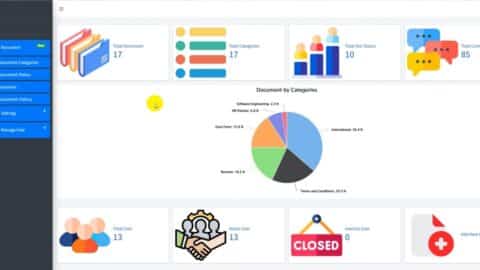How to Streamline Inventory Management for Your Startup Company
Management of your inventory is undoubtedly one of the most important aspects of your company. Not keeping track of stock is one of the leading causes of failure for new businesses. How effective has your company’s approach to stock management been thus far? Have you ever lacked access to the proper supplies at a crucial moment? Did you suffer financial losses because of stockouts? Do you have surplus stock that cost you money? In this post, we’ll go over some of the fundamentals of inventory management, including how it works, why it’s important, and what to look for in effective inventory management software. So how to streamline management of inventory?
Table of Contents
What is Inventory Management?
Management of a company’s inventory is an aspect of supply chain management, which tries to satisfy consumers’ expectations for purchases across all available sales channels. When done well, it helps companies maximize revenue and minimize the expenses associated with stocking too much inventory. Investing in reliable inventory management software will allow you to keep tabs on the stock in real time, greatly simplifying the process.
Having the proper items in the right quantities on hand and avoiding products being out of stock and finances being tied down in excess stock may be achieved via careful inventory management. You can make sure your items sell out before they go bad, become obsolete, or waste money by sitting about in a warehouse or storage facility.
To better manage inventories, you need software that can cut expenses, increase cash flow, and overall enhance the bottom line. Whether you’re operating a brick-and-mortar business, an online store, or both, it’s important to maintain an accurate real-time inventory.
It can also aid in predicting future demand, which can then be utilized to guide future ordering and help avoid product and manufacturing bottlenecks. Additionally, by keeping track of inventory levels, it can prevent excessive stock of raw materials.
By making it simple to analyze stock reports on various gadgets, it provides easy access to the store’s register. This reduces wasted time and improves warehouse efficiency.

Best Practices and Methods for Inventory Management in Startups
Tune Up Your Prognostication Skills
Having reliable forecasts is crucial for the management of inventory. Considerations like sales history, market trends, forecasted growth, the economy, promotions, marketing activities, etc. should all go into your sales projections.
Implement the First-In, First-Out system. (FIFO)
The timing of a sale should correspond with the sequence in which a product was acquired or manufactured. This is of paramount significance for things that spoil quickly, such as food, flowers, and cosmetics. To better manage stock, a bar owner, for instance, could keep track of supplies using FIFO principles. Even for non-perishable things, this is a smart move since they might go bad if they stay around for too long. To use FIFO in a warehouse or storage facility, new goods should be placed towards the rear of the space, behind the older ones.
Find Stocks With Minimal Turnover
If an item hasn’t moved off the shelves in the last season, it’s generally not worth keeping in stock. Since having too much inventory is a waste of both space and money, a detailed report may help you quickly locate unsold goods and take corrective action, such as a price cut or promotion.
Audit Your Inventory
Periodically, you should count your inventory to verify sure it agrees with what you have recorded in your inventory management software. A full physical inventory is taken once a year, at the end of the fiscal year, but many businesses also do periodic “cycle counts,” which are especially helpful for high-turnover items or those that often go out of stock.
Get Machine Downtime Down to a Minimum
Because critical equipment isn’t always in top shape, asset management is crucial for the management of inventory. It might be expensive to fix faulty equipment. Understanding the life cycle of your equipment and its components is essential for being ready for any problems that may develop.
To minimize machine downtime, here are some tips:
- Implement a preventive maintenance program. Regular maintenance of machines can help prevent unexpected breakdowns and extend the life of the equipment.
- Conduct regular inspections. Inspections can help detect problems early on before they become major issues that require extensive repairs.
- Train operators. Operators should be well-trained to know how to use the equipment properly and troubleshoot common issues.
- Keep spare parts on hand. Having spare parts readily available can reduce downtime caused by waiting for parts to arrive while streamlining management of inventory.
- Use real-time monitoring systems. Sensors and other real-time monitoring systems can alert you to potential problems before they cause a breakdown.
- Schedule downtime strategically. Plan maintenance and repair work during periods when the equipment is not in use or has low demand.
Focus on Quality Control
Regardless of your field, it is essential to check that your items are both attractive and functional. It may be as easy as creating a checklist for staff to use during stock audits to check for things like damage and proper product labeling.
Hire a Stock Controller
All things, from raw materials to final products, may be counted and accounted for with the use of stock management. A dedicated inventory manager could be necessary if your stock is extensive. A stock controller handles all purchase orders, checks in deliveries, and verifies that they are in accordance with purchase orders.

Final Thoughts on Streamlining Management of Inventory
Your ability to efficiently manage inventory will be the deciding factor in whether or not your clients have faith in your reliability. This is especially true at peak times like the holidays, summer, and other fixed seasons. As a result, every unit counts.

Vice President, İntelligent Design & Consultancy Ltd
Over 12 years of global & rich experience in Portfolio & Program Delivery Management in leading & managing IT Governance, PMO, IT Portfolio/Program, IT Products, IT service delivery management, Budget Management, and more.










